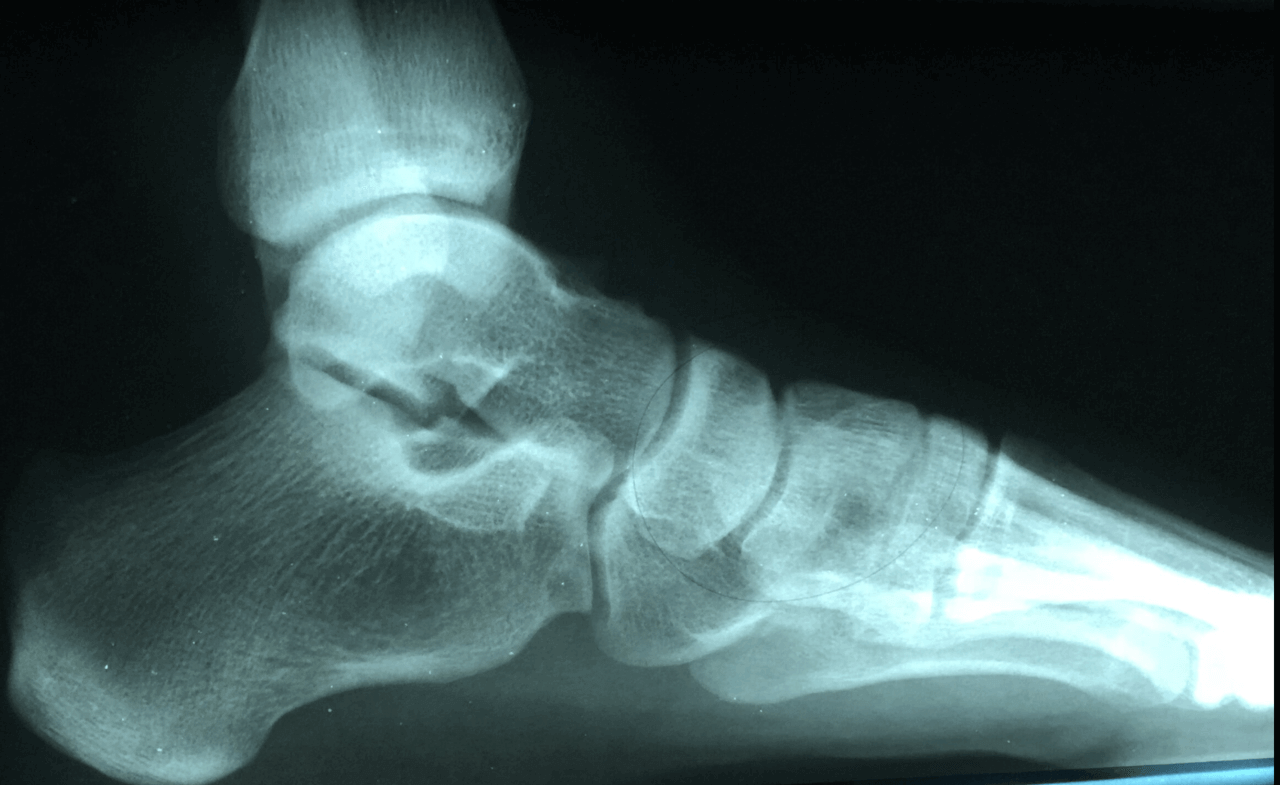plantar fasciitis
Displaying items by tag: plantar fasciitis
Dr Brandon Nelson, A Board Certified Physician & Surgeon, Issaquah’s Best Podiatrist, Discusses Heel Pain

Heel pain can affect people of all ages, lifestyles and activity levels. You can be an avid exerciser, a home body or just spend all day working on your feet. I will discuss some of the causes of heel pain, the symptoms and when to seek medical attention. I have been a practicing podiatrist in Issaquah for over 25 years and have treated and helped 1000’s of patients.
There are many common causes of heel pain. However a few are the most common and these include; plantar fasciitis, Achilles tendonitis, stress fractures and Baxter’s neuritis.
Plantar fasciitis is caused from an inflammation of a band of tissue running on the bottom of the foot. The job of the fascia is to support the arch of the foot and control 3 dimensional movement. It often occurs with repetitive stress like standing all day or running.
Achilles tendonitis is usually located more towards the back of the heel. The Achilles tendon helps to push off the foot during the gait cycle. Often any activity that increases load like jumping rope can cause the Achilles to become inflamed. People often feel swelling or a thickening of this tendon in the ankle.
Stress fractures are usually related to overtraining and time. They occur with repetitive loading of a bone. The bone I am speaking of in this case is the calcaneus. These can be tricky to diagnose.
Baxter’s neuritis is rare but is often confused for plantar fasciitis. There is usually more of a burning or tingling that occurs. Often there is not an increase in activities and no correlation with time spent on your feet and pain.
I recommend seeking early treatment for heel pain. I see that patients that wait longer have a harder time recovering and often need more therapeutic interventions. This is especially true for athletes, get in early and get a head of the pathology.
If you have heel pain and would like an appointment with Issaquah’s top Podiatrist at 425-391-8666 or make an appointment online.
Sincerely,
Board Certified Foot & Ankle Surgeon
Dr Brandon Nelson, A Board-Certified Physician & Surgeon Discusses Plantar Fasciitis

Plantar fasciitis affects millions of people worldwide. It is often a debilitating condition that limits people’s activities. It is characterized by pain in one’s heel, pain when we get out of bed or can even be a bruised sensation to the bottom of the foot. Today I will discuss some of the causes, symptoms, diagnosis, and treatment. The plantar fascia itself is a thick ligament like tissue that runs on the bottom of the foot to provide support.
Causes:
The number one cause is overuse. This can be exercise or standing all day or a change in the amount of either of these. Other causes can be shoe gear, weight or even the foot structure one is born with.
Symptoms:
The most common symptom is sharp heel pain, especially when you first get up from a seated position. This usually improves as we walk but returns at the end of the day. Some people experience stiffness or even burning.
Diagnosis:
A good clinical examination can help identify plantar fasciitis for most people. The is usually pain with palpation of the heel, specifically at the heel bone where the fascia attaches. An x-ray can be useful to detect bone spurs.
Treatment:
The mainstay of treatment is to work on stretching of the foot and Achilles. Additionally, increasing support for the feet can be helpful. Often by the time I see patients an injection is needed to calm down the inflammation and help with recovery.
If you would like a consultation on your heel pain, I can help. Call to make an appointment with me at 425-391-8666 or schedule an appointment online.
Sincerely,
Dr Brandon Nelson
American College of Foot & Ankle Surgeons
Dr Brandon Nelson, A Board-Certified Physician & Surgeon Discusses Plantar Fasciitis

Plantar fasciitis or heel pain is the most common cause to seek help from a foot and ankle physician. There are many causes of heel pain but by far the most common is plantar fasciitis. So, let’s discuss first what the plantar fascia is, second why it occur and lastly how to fix it.
What is your plantar fascia? The plantar fascia is located on the bottom of your foot. It runs the entire length of your foot from your heel to your toes. It starts with an attachment at the calcaneus, your heel bone, and runs to your metatarsal head, where your toes start. It is a thick dense fascial type of tissue. Its main function is to support your arch. It also helps flex your toes and provides stability to your foot with ambulation.
Why does plantar fasciitis happen? There are many schools of thought on this one but let’s talk about a few of the most common. The first and probably most accepted theory is overuse. The fascia never gets a chance to rest, it is the workhorse of the foot. Every step you take it is activated and over time this can fatigue the structure. Secondly foot genetics can play a role in it as well. People with a flatfoot tend to need more arch support and this can put pressure on the plantar fascia. Lastly there is a thought that tight calf muscles can pull on the fascia making it irritated. I think all of these can have merit in certain circumstances and I often see multiple etiologies.
Lastly, how do we treat plantar fasciitis? This is a more complex question. I think this one is very hard to answer as every case can be different. I think a careful history and physical is essential for proper treatment. I also find length of time and activity level to be important. But a couple general things can help like calf stretching and activity medication can be essential.
If you would like a consultation on your heel pain, I can help. Call to make an appointment with me at 425-391-8666 or schedule an appointment online today.
Sincerely,
American College of Foot & Ankle Surgeons
Dr Brandon Nelson, A Board-Certified Physician & Surgeon Discusses Burning Pain in Your Heel

Have you experienced burning in your heel? Does your heel feel like it is on fire? Are you getting pins and needles in your heels? This could be a condition called Baxter’s neuritis or an entrapped nerve in your foot. This can often be confused with plantar fasciitis and the two can be difficult to distinguish.
I saw a few patients this last week that had Baxter’s neuritis and it made me want to write a few words about it. This condition was brought to popularity by Dr Baxter and prior to that this pathology was often thought of as plantar fasciitis. It should be noted that many patients I see have both conditions present. The most notable difference seems to be the burning pain and radiating nerve pain that can be reproduced by tapping the nerve. However, a nerve study can be helpful to confirm the diagnosis and help with planning treatment.
There are a few conservative measures that can provide pain relief. Orthotics, injections, and some medications prove to be successful. However, some patients do not find any improvement and surgical decompression of the nerve is done at that point. The constricting structures around the nerve are freed up and the pain typically resolves. I always recommend trying conservative measures first before considering surgical intervention.
If you have burning heel pain I can help, call to make an appointment with me at 425-391-8666 or schedule an appointment online.
carpet cleaning seattle
Sincerely,
American College of Foot & Ankle Surgeons
Dr Timothy Young reviews Shockwave Therapy: The Ultimate Solution for Stubborn Plantar Fasciitis

Dr Timothy Young reviews Shockwave Therapy: The Ultimate Solution for Stubborn Plantar Fasciitis
Introduction
Plantar fasciitis is a painful and persistent condition that can severely impact one's quality of life. Characterized by intense heel pain, especially during the first steps in the morning or after prolonged periods of rest, it's a condition that affects millions of people worldwide. While there are various treatment options available, shockwave therapy has emerged as a leading choice for those struggling with stubborn plantar fasciitis. In this blog, we'll explore why shockwave therapy is often considered the best treatment for this challenging ailment.
Understanding the Frustration of Stubborn Plantar Fasciitis
Plantar fasciitis occurs when the plantar fascia, a thick band of tissue that runs along the bottom of the foot, becomes inflamed or damaged. This condition can be particularly frustrating because it often resists traditional treatments, such as rest, ice, and stretching exercises. When conservative measures fail to provide relief, individuals may face ongoing pain, reduced mobility, and decreased quality of life.
Why is Shockwave Therapy the Best Option for Stubborn Plantar Fasciitis?
Non-Invasive and Minimally Disruptive: Unlike surgical options, shockwave therapy is a non-invasive procedure. Patients can undergo treatment without the need for incisions, anesthesia, or a lengthy recovery period. This makes it an attractive option for those looking to avoid the risks and downtime associated with surgery.
High Success Rates: Numerous studies and clinical trials have demonstrated the effectiveness of shockwave therapy for stubborn plantar fasciitis. Many patients experience significant pain reduction and improved function after a series of shockwave sessions.
Stimulates Natural Healing: Shockwave therapy works by delivering high-energy shockwaves to the affected area. These shockwaves create microtrauma within the damaged tissue, stimulating the body's natural healing response. This process promotes tissue regeneration and reduces inflammation.
Quick and Convenient: A typical shockwave therapy session lasts only 15-20 minutes, and most patients can resume their daily activities immediately afterward. The procedure is typically performed in an outpatient setting, making it a convenient option for those with busy schedules.
Addresses the Root Cause: Unlike some treatments that merely mask the pain, shockwave therapy targets the root cause of plantar fasciitis. By promoting healing and reducing inflammation, it offers long-term relief rather than just temporary pain management.
Minimal Side Effects: The side effects of shockwave therapy are generally mild and short-lived. Some patients may experience temporary soreness or bruising at the treatment site, but these effects are typically minor compared to the potential benefits.
Reduced Reliance on Medications: Shockwave therapy can often reduce the need for pain medications, which can have side effects and long-term risks. This is particularly important for individuals seeking to avoid the potential downsides of pharmaceutical interventions.
Conclusion
Stubborn plantar fasciitis can be an incredibly frustrating and painful condition, but there is hope. Shockwave therapy has emerged as a highly effective and non-invasive treatment option, offering relief and improved quality of life for those who have struggled for far too long. If you've been dealing with the relentless discomfort of plantar fasciitis, consult with a healthcare professional to discuss whether shockwave therapy is a suitable treatment for you. While no treatment is guaranteed to work for everyone, shockwave therapy has proven to be a game-changer for many individuals, providing the opportunity to regain their mobility and enjoy life without the constant burden of pain. Please contact our clinic to see if this treatment is right for you. Give us a call at 425-391-8666 or make an appointment online.
Plantar Fasciitis Treatment Success with Shockwave Therapy

Plantar Fasciitis Treatment Success with Shockwave Therapy
Introduction
Plantar fasciitis is a common and often debilitating condition characterized by heel pain, especially in the morning or after prolonged periods of standing or walking. It occurs when the plantar fascia, a thick band of tissue that runs along the bottom of the foot, becomes inflamed or damaged. While there are several treatment options available, one that has gained increasing attention for its success is shockwave therapy. In this blog, we'll explore plantar fasciitis and delve into how shockwave therapy has emerged as a highly effective treatment option, offering hope and relief to those individuals suffering from this condition.
Understanding Plantar Fasciitis
Before reviewing shockwave therapy, it's essential to understand what plantar fasciitis is and why it can be so challenging to treat. The plantar fascia is a crucial component of the foot's structure, acting as a shock absorber and supporting the arch of the foot. When this tissue becomes damaged or inflamed, it can lead to persistent heel pain and reduced mobility.
Common Causes of Plantar Fasciitis:
Overuse or repetitive strain on the plantar fascia, often due to activities like running or standing for extended periods.
Obesity, as excess weight puts extra stress on the feet.
Improper footwear with inadequate arch support.
Tight calf muscles or Achilles tendon.
Traditional Treatment Approaches
Plantar fasciitis treatment typically begins with conservative methods, including:
Rest: Reducing activity levels to allow the plantar fascia to heal.
Ice: Applying ice to the affected area to reduce inflammation.
Stretching exercises: Focusing on calf stretches to improve flexibility.
Orthotics: Custom shoe inserts to provide arch and biomechanical support.
Non-steroidal anti-inflammatory drugs (NSAIDs): Medications to manage pain and inflammation.
While these methods can be effective for some individuals, others find themselves facing chronic, persistent pain that doesn't respond well to these treatments. This is where shockwave therapy comes into play.
Shockwave Therapy for Plantar Fasciitis
Shockwave therapy, also known as extracorporeal shockwave therapy (ESWT), is a non-invasive procedure that has shown remarkable success in treating plantar fasciitis when other treatments have failed. Here's how it works:
Application of Shockwaves: During the procedure, high-energy shockwaves are directed at the affected area. These shockwaves create microtrauma within the damaged tissue, stimulating the body's natural healing response.
Pain Reduction and Healing: Shockwave therapy has been shown to reduce pain by disrupting pain signals and improving blood flow to the damaged tissue. This, in turn, promotes tissue regeneration and healing.
Quick Procedure with Minimal Downtime: Shockwave therapy sessions typically last 15-20 minutes, and most patients can resume their regular activities shortly afterward. Five weekly sessions typically offer optimal results.
Success with Shockwave Therapy
The success of shockwave therapy in treating plantar fasciitis is supported by numerous patient testimonials and clinical studies. Here are a few reasons why it has gained popularity:
High Success Rate: Many patients experience significant pain reduction and improved mobility after undergoing shockwave therapy.
Non-Surgical: Shockwave therapy is non-invasive, eliminating the need for surgery and its associated risks and recovery time.
Long-Lasting Relief: For many, the benefits of shockwave therapy are long-lasting, providing relief from chronic pain.
Improved Quality of Life: Patients who have struggled with plantar fasciitis for years often find that shockwave therapy finally allows them to regain their quality of life and return to their favorite activities.
Available treatment: We have been proving this treatment at our clinic with high success for over 8 years
Conclusion
Plantar fasciitis can be a stubborn and painful condition, but there is hope for those who have tried various treatments without success. Shockwave therapy has emerged as an effective and non-invasive option, offering relief and improved quality of life for individuals suffering from this condition. If you're struggling with plantar fasciitis, please contact our clinic at 425-391-8666 or make an appointment online.
Dr Brandon Nelson, A Board-Certified Physician & Surgeon Discusses Plantar Fasciitis and Heel Spurs

Heel pain and heel spur syndrome are painful conditions that can affect everyday life and make walking and exercise miserable. I see patients that have been suffering for years from this and have tried to live with it. I encourage anybody with heel pain or bone spurs to seek help earlier as it is much easier to rectify this situation with early intervention.
Heel pain is often caused by plantar fasciitis. The plantar fascia is a large thick band of connective tissue that helps to hold up the arch. It is activated when you walk or exercise to provide dynamic control of the foot. It can become extremely painful with overuse and create a considerable cycle of pain. Usually, the pain is worse in the morning, then gets a little better as the day goes on but returns anytime you sit down or rest. Currently there are many great treatment options for fasciitis, however the underlying cause needs to be identified.
Heel spur syndrome often occurs with plantar fasciitis. This is when a bone spur develops on the heel bone or calcaneus. It is often on the site where the plantar fascia attaches and can be a result of long-term tension from the fascia. It can be difficult to determine if it is the bone spur or the fascia that is inflamed. Both can be present at the same time and often testing is needed to differentiate the sources of pain.
I understand that heel pain can be life altering and am here to help.
If you have heel pain, and want to get back to enjoying your life, make an appointment with me today at 425-391-8666 or book an appointment online.
Dr. Brandon Nelson
Issaquah Foot and Ankle Specialists
Dr. Brandon Nelson, A Board Certified Physician & Surgeon Discusses Heel Pain

Heel pain can be very frustrating for anybody. We often hear of symptoms ranging from burning and tingling to a bruised sensation in the heel. The timing of the pain is typically after exercise or when first getting out of bed. The length of symptoms have existed seem to be months to years. Often there is no underlying injury and causes can vary by age but is more common in adults.
Heel pain is a common symptom of many pathologies. The most common being plantar fasciitis. This is a condition where a band of support tissue on the bottom of the foot is inflamed. It can become fatigued when overused. The most common cause in children is inflammation of a growth plate. This is often seen around sporting events or as children go through a rapid growth spurt. Regardless, both have many options available for treatment.
Treatment always begins with an x-ray. The x-ray is important to help rule out other causes and establish a diagnosis. Once a diagnosis is established we can begin to find causes and contributing factors. It is essential to identify things that may be potentiating the pain and dysfunction. Then a treatment plan can be established that will help to mitigate symptoms and work on recovery.
Recovery can be challenging as there may need to be a change in activities. I often see a correlation with the amount of time the patient has had the pathology with the recovery length. The longer a patient has had the issue the longer it can take to recover. The most important factor is to see a physician that specializes in your problem so you can get the correct plan to heal. If you have heel pain I can help please call us at 425-391-8666 or make an appointment online today.
Sincerely,
Dr. Brandon Nelson, A Board Certified Physician & Surgeon, Discusses Heel Pain That Will Not Go Away

The most common cause of heel pain continues to be plantar fasciitis. This is usually caused by a foot structure that puts too much pressure on the fascia or tight muscle groups. The majority of plantar fasciitis will go away with physician care and patients will return to normal activities. However, there are a few patients that their heel pain does not get better and need additional treatment.
If you are one of these patients it is important to see a physician that specializes in heel pain. There can be a few diagnoses that need to be considered for anyone that has recalcitrant heel pain. These can range from nerve to bone issues and a careful work up is warranted. Our practice has been home to the Washington Heel Pain Center for years. We were actually the first heel pain center in Washington State and then saw many other offices try to follow suit. However, our physician group finds heel pain fascinating and we diligently scour the latest research to remain up to date on causes and treatment options.
If you suffer from heel pain and have seen other doctors we can help. Or maybe heel pain is new for you and you want the best care we can help. We provide the best care and have the quickest options to get you back exercising or keep you exercising. Make an appointment today and we can help. Give us a call at 425-391-8666 or make an appointment online today.
Sincerely,
Dr Brandon Nelson, A Board Certified Physician & Surgeon, Discusses Morning Heel Pain

Heel pain can be very challenging no matter when it occurs. It can be common in the morning or after exercise. There are many causes of heel pain and the most common is plantar fasciitis. Plantar Fasciitis is a condition in which the plantar fascia in your foot becomes inflamed.
An inflamed plantar fascia is often characterized by burning or a bruised type sensation one's heel. Many patients describe the fact they feel like they are walking on a marble or pebble. This can get worse as time and activity levels go on and can become quite debilitating. This can be brought on by many causes but most notable is overuse.
Overuse is by far the most common cause. Patients often relate the start of a new exercise program or a new activity. This new activity can put new stresses on your fascia which ultimately leads to inflammation and pain. It is always best to ease into activities as this can help minimize fascial pain. Another key characteristic of facial pain is morning stiffness or irritation.
Morning pain is a hallmark of fasciitis. This is very common and one of the most challenging parts of having plantar fasciitis. This is often because when you sleep and then step down on your foot your fascia instantly becomes irritated. This can be extremely difficult to get rid of and often sticks around for months. This is when it is time to make an appointment with a heel pain specialist. I have been treating heel pain for 15 years and can help you get rid of it quickly. Give us a call today at 425-391-8666 or make an appointment online today.
Sincerely,
Dr Brandon Nelson



